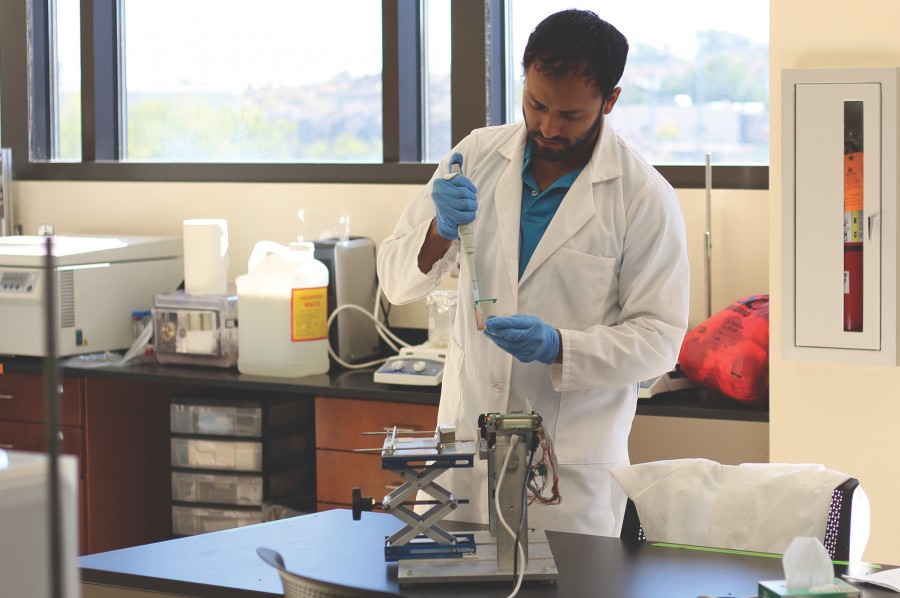UTEP researchers patented a new device that helps HIV patients monitor their health quickly and at a low cost. Tests for people who live with HIV can be complicated, difficult and expensive. Thomas Boland, Ph.D., professor in the department of metallurgical, materials and biomedical engineering at UTEP, and Julio Rincon, doctoral biomedical engineering student, developed the printer with the intentions of making the process simpler, affordable and available to the majority of people, especially those living in third-world countries
“There’s just not enough infrastructure in some places to get these important lab tests done,” Boland said in a news release. “Our device can bridge that gap cheaply and quickly. HIV patients can be in and out of the doctor’s office in no time for a diagnosis or check-up.”
It is recommended for people diagnosed with HIV to have regular health check ups, consisting of blood tests performed every three to six months. Such exams are very costly and may take several days to get the results.
These special blood tests are administered to keep track of the patient’s count of CD4 cells, the main target of the HIV virus. A person’s CD4 cells count is the strongest predictor on how HIV is progressing in the patient or if treatment is having positive results. A decreased number of CD4 cells a patient has, the closer they are to developing AIDS.
The tests are very important to the health of people with HIV, but performing this test is costly and not affordable for everyone.
The procedure developed by Boland and Rincon involves mixing magnetic particles that detect CD4 cells with the blood sample drawn from a patient. The magnetic particles and CD4 cells stick together. The mixture is then placed in an inkjet printer that has been altered to print horizontally onto a magnetized microscopic slide. CD4 cells previously latched onto the magnetic particles and attach to the slide, while the rest of the cells in the blood sample trickle into a separate container.
The process is an alternative to the conventional way of testing that involves flow cytometers—large machines that run on electricity and can cost more than $50,000.
“The key here is low resource,” Rincon said. ”This is much cheaper than flow cytometers.”
The printer is cheaper to build and operate than flow cytometers.
According to data from the Centers for Disease Control and Prevention (CDC) website, in 2014 there were two million new reported cases of HIV worldwide. Approximately 36.9 million people around the world live with this disease. The CDC also found that the 70 percent of the cases are reported in the poorest regions of Africa, followed by South America and Asia, in marginalized areas of difficult access and decreased resources.
This is exactly what the printer can help address, providing a way to have more affordable tests that provide results in minutes rather than days.
“We selected a small device so we can do this (monitoring exams) in a remote area,” Boland said.” “So you don’t have to send the sample to the city to have it examined in a lab.”
Currently, this device is just a prototype that can still be modified to make it even smaller. The developers of this innovative printer are waiting for an offer from a company to license their product and that will help them launch it in the market. Rincon said that several doctors from Mexico have already shown an interest in this invention.
Valeria Terrazas may be reached at [email protected].










